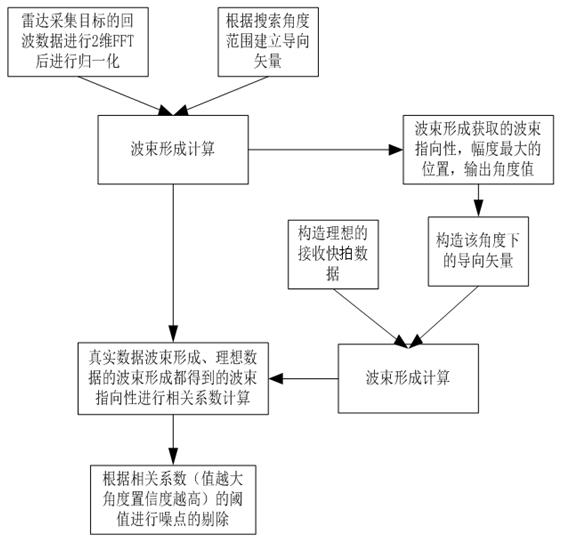A Method for Estimating Angle Confidence of Vehicle Millimeter-Wave Radar
A technology of millimeter-wave radar and confidence level, which is applied in the direction of measuring device, radio wave measurement system, radio wave reflection/re-radiation, etc., can solve the problems of poor versatility, achieve high accuracy, small calculation amount, and meet real-time calculation Effect
- Summary
- Abstract
- Description
- Claims
- Application Information
AI Technical Summary
Problems solved by technology
Method used
Image
Examples
Embodiment Construction
[0033] The specific embodiments of the present invention will be further described below with reference to the accompanying drawings. It should be noted here that the descriptions of these embodiments are used to help the understanding of the present invention, but do not constitute a limitation of the present invention. In addition, the technical features involved in the various embodiments of the present invention described below can be combined with each other as long as they do not conflict with each other.
[0034] The present invention provides such as figure 1 The shown method for estimating the angle confidence of a vehicle-mounted millimeter-wave radar includes the following steps:
[0035] Step 1: The radar collects the echo data of the target position and performs the two-dimensional fast Fourier transform before normalization. Specifically, the distance and the angle of the echo data of the target position collected by the radar are successively subjected to the f...
PUM
 Login to View More
Login to View More Abstract
Description
Claims
Application Information
 Login to View More
Login to View More - R&D
- Intellectual Property
- Life Sciences
- Materials
- Tech Scout
- Unparalleled Data Quality
- Higher Quality Content
- 60% Fewer Hallucinations
Browse by: Latest US Patents, China's latest patents, Technical Efficacy Thesaurus, Application Domain, Technology Topic, Popular Technical Reports.
© 2025 PatSnap. All rights reserved.Legal|Privacy policy|Modern Slavery Act Transparency Statement|Sitemap|About US| Contact US: help@patsnap.com



